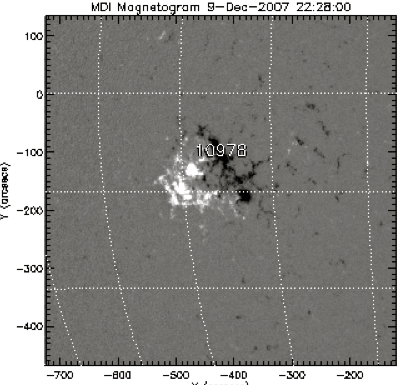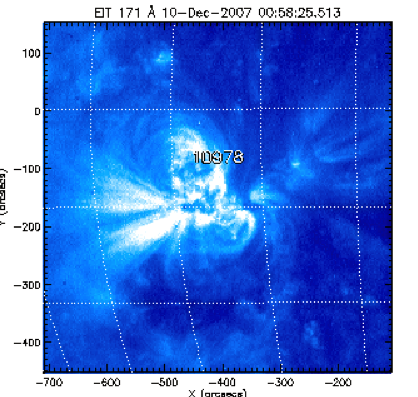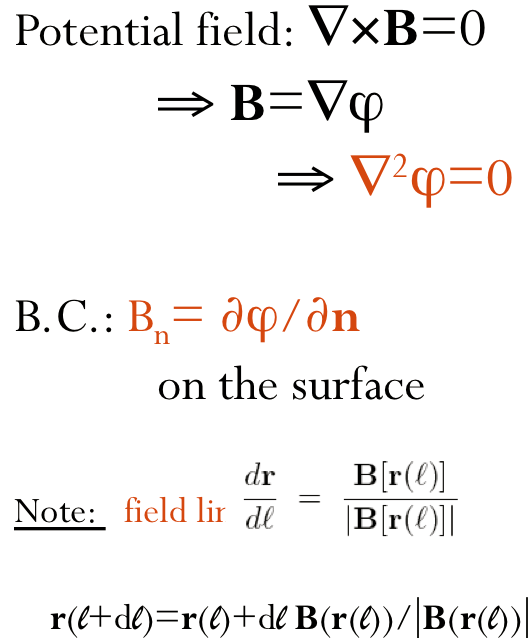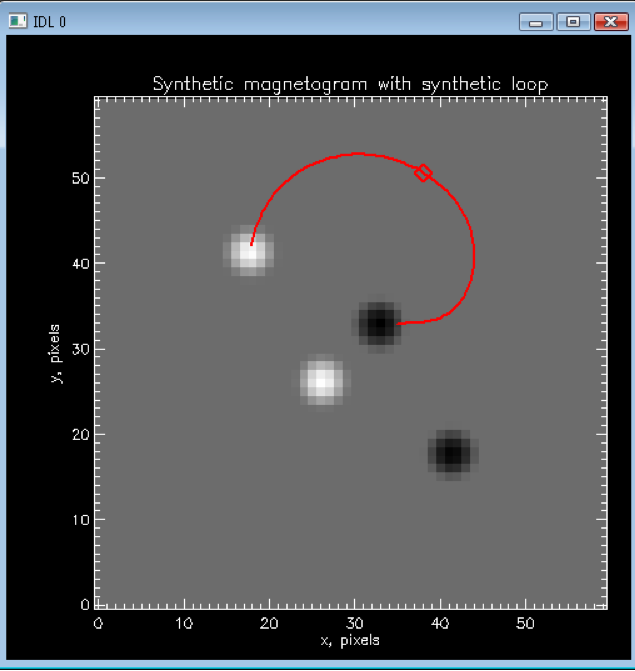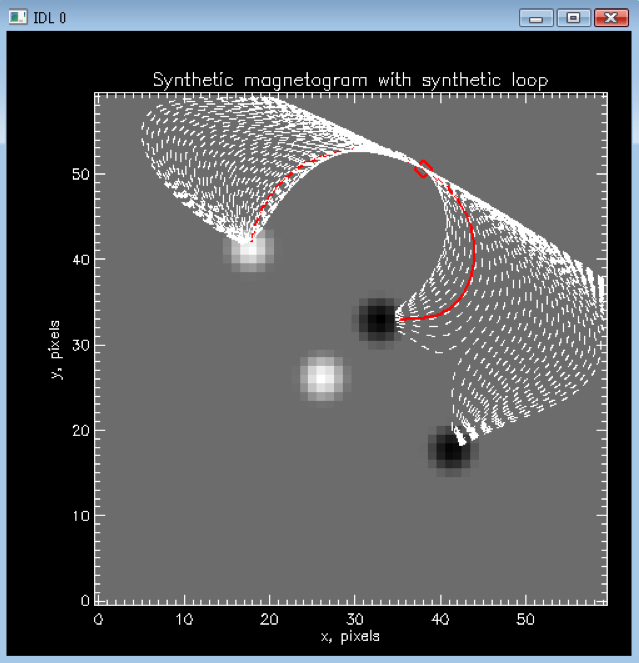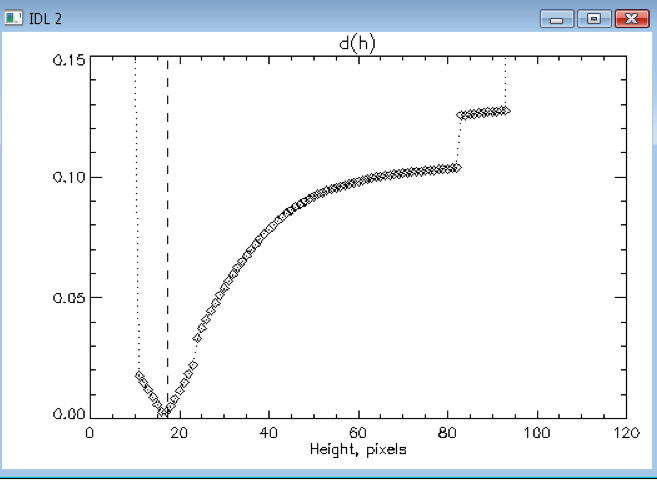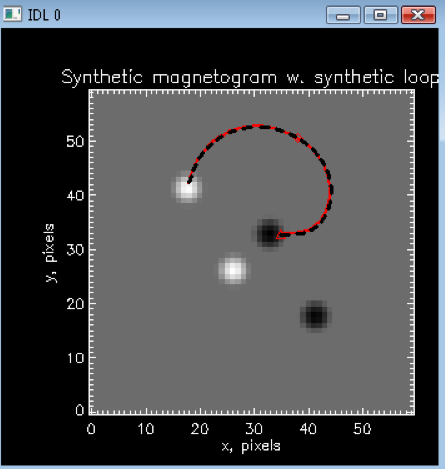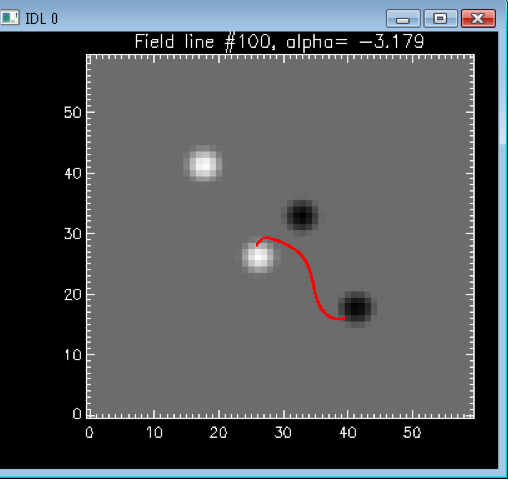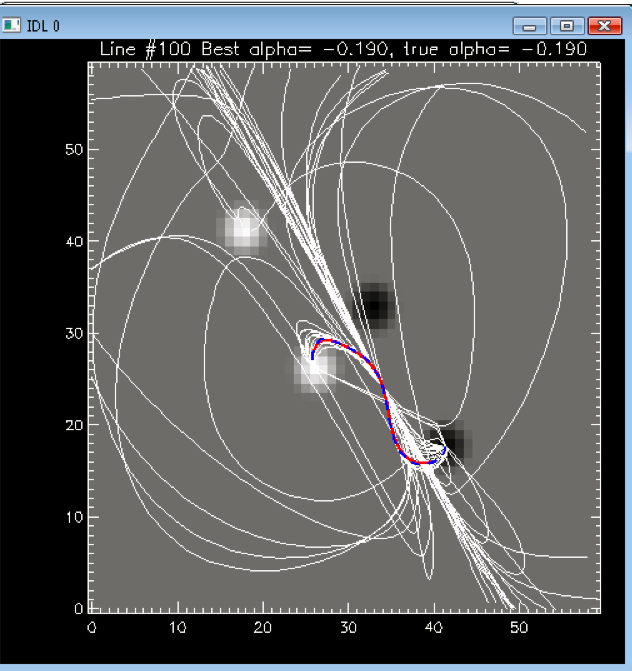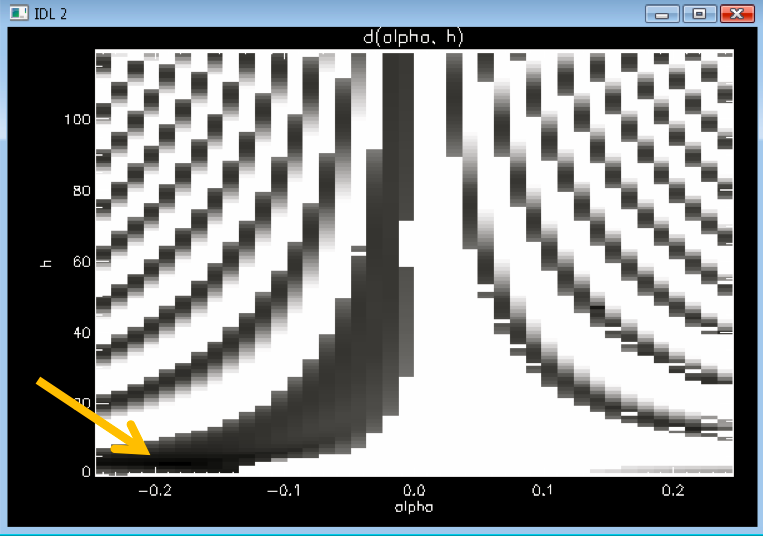As
we can see, there are two unknowns in this case, B and α.
So this results in a partial differential equation that is linear and
easily solvable for B , if
α and the
boundary conditions are known. The fact that the field is force-free
makes it useful in modelling magnetic equilibrium, and also the
linearity makes it easy to compute.
Since both α and h (or z) are unknown, distance between the
traced loop and the corresponding field lines would be a function of
both α and h. So the minimization d=d(α,h) has to be done
in (α,h) space.
The following steps are needed to be executed:
- Different
α
s are tried as α is unknown.
- For
each α, the best-fit h is selected.
- The
"best-fits" for different α s are compared and the best is taken.
- Best
is the one with the minimum d(α,h).
This
method works exceptionally well for constant α fields and is an
efficient means of finding α for a given magnetic field line.
|
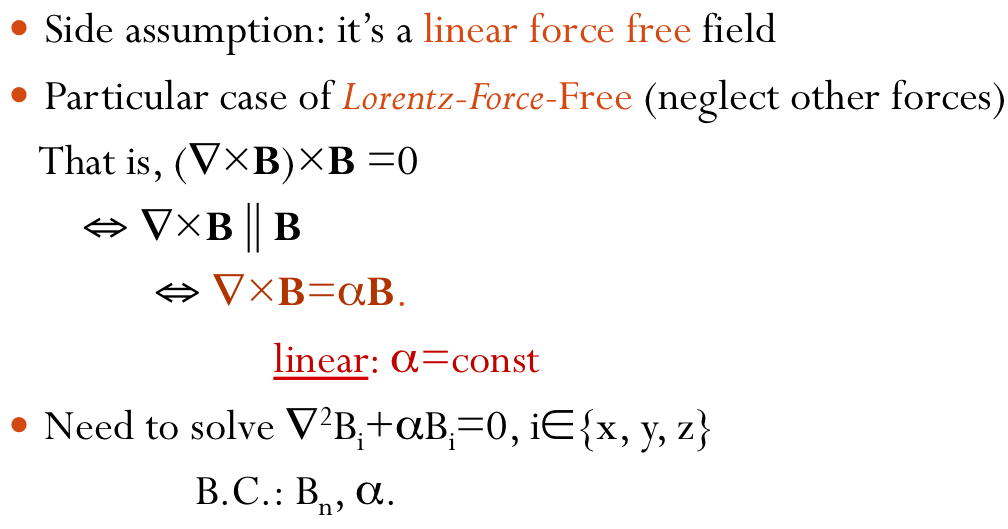
|
|
